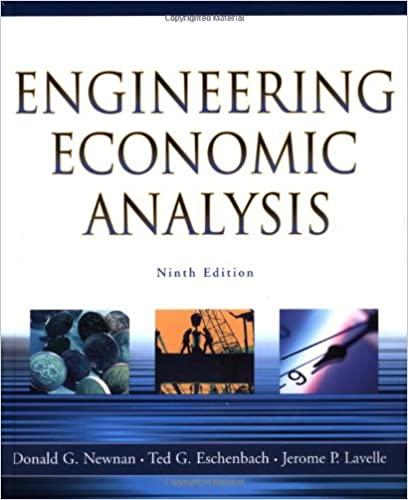The state is considering eliminating a railroad grade crossing by building an overpass. The new Structure, together
Question:
At present, about 1000 vehicles per day are delayed by trains at the grade crossing. Trucks represent 40%, and 60% are other vehicles. Time for truck drivers is valued at $18 per hour and for other drivers at $5 per hour. Average time saving per vehicle will be 2 minutes if the overpass is built. No time saving occurs for the railroad.
The installation will save the railroad an annual expense of $48,000 now spent f-or crossing guards. During the preceding 10-year period, the railroad has paid out $600,000 in settling lawsuits and accident cases related to the grade crossing. The proposed project will entirely eliminate both these expenses. The state estimates that the new overpass will save it about $6000 per year in expenses directly due to the accidents. The overpass, if built, will belong to the state.
Should the overpass be built? If the overpass is built, how much should the railroad be asked to contribute to the state as its share of the $1,800,000 construction cost?
Salvage Value
Salvage value is the estimated book value of an asset after depreciation is complete, based on what a company expects to receive in exchange for the asset at the end of its useful life. As such, an asset’s estimated salvage value is an important...
Fantastic news! We've Found the answer you've been seeking!
Step by Step Answer:
Related Book For 

Engineering Economic Analysis
ISBN: 9780195168075
9th Edition
Authors: Donald Newnan, Ted Eschanbach, Jerome Lavelle
Question Posted:





